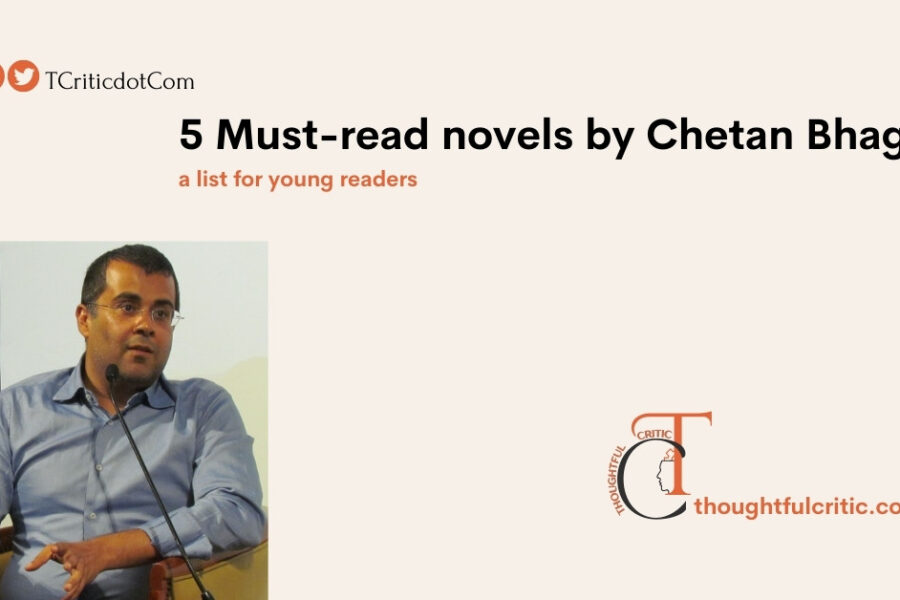When delving into the realm of literature, one cannot help but notice the unique essence that Indian English novels bring to the table, setting them apart from their Western counterparts. While Western literature often portrays cosmopolitan and individualistic narratives, Indian literature in English is deeply entrenched in the rich tapestry of Indian culture, tradition, and communal experiences. These novels delve into the intricate nuances of identity, caste, colonialism, and the vibrant mosaic of Indian life with a profound sensitivity that resonates across generations. Whether it’s capturing the idyllic charm of a South Indian village or the frenetic energy of an urban metropolis, Indian authors possess an unparalleled ability to transport readers to the very heart of their narratives, allowing them to feel every emotion, struggle, and jubilation. In order to truly grasp the essence of Indian storytelling, delving into the pages of these ten classic Indian English novels is an absolute necessity.
1. Swami and Friends by R.K. Narayan (1935)
Why You Should Read It:
R.K. Narayan’s Swami and Friends is often hailed as one of the foundational texts in Indian English literature. Set in the fictional town of Malgudi, the novel follows the life of a young boy named Swaminathan, or Swami, as he navigates the trials and tribulations of childhood. Narayan’s writing is simple yet profound, capturing youth’s innocence and wonder while subtly critiquing pre-independent India’s societal norms.
Significance:
Narayan’s work is celebrated for vividly portraying everyday life in India. His ability to create a world that is both uniquely Indian and universally relatable has earned him comparisons to literary giants like Charles Dickens. Swami and Friends remains a timeless piece of literature that offers readers a glimpse into the heart of India through the eyes of a child.
2. Untouchable by Mulk Raj Anand (1935)
Why You Should Read It:
Mulk Raj Anand’s Untouchable is a powerful social commentary on the caste system in India. The novel focuses on a day in the life of Bakha, a young sweeper who belongs to the lowest rung of the caste hierarchy. Through Bakha’s experiences, Anand exposes the inhumanity and indignity faced by millions of Dalits in India.
Significance:
Untouchable is one of the earliest examples of Indian English literature that directly confronts social issues. Anand’s commitment to social realism and his empathetic portrayal of marginalised communities make this novel a must-read for anyone interested in understanding the complexities of Indian society.
3. Kanthapura by Raja Rao (1938)
Why You Should Read It:
Kanthapura by Raja Rao is a seminal work that blends traditional Indian storytelling with modernist techniques. The novel is set in a small village in South India and tells how the Gandhian struggle for independence permeates rural life. The narrative is delivered in the style of a puranic tale, with a strong oral tradition and a focus on communal experiences.
Significance:
Rao’s innovative narrative style and ability to weave Indian mythology into contemporary issues make Kanthapura a landmark in Indian literature. The novel is a rich tapestry of folklore, history, and politics, providing readers with an authentic taste of rural India during the independence movement.
4. The Shadow Lines by Amitav Ghosh (1988)
Why You Should Read It:
Amitav Ghosh’s The Shadow Lines is a novel that explores the fluidity of borders, both physical and psychological. Through the intertwined lives of two families—one in Calcutta and the other in London—Ghosh examines the impact of historical events like the Partition of India and World War II on individual lives. The novel is a meditation on memory, identity, and the concept of nationhood.
Significance:
Ghosh’s mastery of narrative structure and his exploration of boundaries—whether they are between nations or within minds—make The Shadow Lines a profound and thought-provoking read. The novel challenges readers to rethink their notions of history and identity, making it a classic of Indian English literature.
You can also explore: Amitav Ghosh writing style
5. A Bend in the Ganges by Manohar Malgonkar (1964)
Why You Should Read It:
A Bend in the Ganges is a historical novel set against the backdrop of India’s struggle for independence and the ensuing Partition. The story follows the lives of two protagonists, Gian and Debi, who are initially drawn together by their shared hatred of British rule but are later divided by their differing ideologies—the novel delves into themes of violence, betrayal, and the personal cost of political convictions.
Significance:
Malgonkar’s novel is notable for its unflinching portrayal of the violence and chaos of Partition. His nuanced depiction of the characters’ moral dilemmas and the consequences of their choices make A Bend in the Ganges a compelling exploration of a tumultuous period in Indian history.
6. Cry, The Peacock by Anita Desai (1963)
Why You Should Read It:
Anita Desai’s Cry, The Peacock is a psychological novel that delves into the inner world of its protagonist, Maya, a young woman who becomes increasingly isolated and paranoid after the death of her pet dog. The novel explores themes of mental illness, loneliness, and the oppressive nature of traditional Indian marriages.
Significance:
Desai’s lyrical prose and focus on the psychological aspects of her characters’ lives set her apart from other Indian authors of her time. Cry, The Peacock is a haunting exploration of the fragility of the human mind and the societal pressures that contribute to its disintegration.
7. Godan by Premchand (1936, English Translation)
Why You Should Read It:
Originally written in Hindi, Premchand’s Godan is a classic of Indian literature translated into English, allowing a broader audience to appreciate its brilliance. The novel tells the story of Hori, a poor farmer who dreams of owning a cow, symbolising prosperity and social status. Through Hori’s struggles, Premchand critiques the socio-economic conditions of rural India.
Significance:
Godan is considered one of Premchand’s finest works and a cornerstone of Indian literature. The novel’s focus on the harsh realities of village life and its portrayal of the exploitation faced by farmers make it a powerful social document and a profoundly moving story.
8. He Who Rides a Tiger by Bhabani Bhattacharya (1954)
Why You Should Read It:
Bhabani Bhattacharya’s He Who Rides a Tiger is a novel about survival and the lengths to which a person will go to reclaim dignity. The story follows Kalo, a blacksmith, who, after being wrongfully imprisoned, decides to challenge the social order by pretending to be a holy man. The novel explores themes of social injustice, hypocrisy, and the resilience of the human spirit.
Significance:
Bhattacharya’s novel sharply critiques the caste system and the social inequalities that plague Indian society. His use of irony and satire, combined with a compelling narrative, makes He Who Rides a Tiger an essential read for anyone interested in India’s social dynamics.
Also Read: Bhabani Bhattacharya Biography
9. The Guide by R.K. Narayan (1958)
Why You Should Read It:
The Guide is another masterpiece by R.K. Narayan that tells the story of Raju, a railway guide who transforms from a petty criminal to a spiritual guru. The novel is a humorous yet poignant exploration of redemption, identity, and the blurred lines between illusion and reality.
Significance:
Narayan’s ability to infuse his narrative with wit and wisdom while delving into serious philosophical questions makes The Guide a standout in Indian literature. The novel explores the human capacity for change and the search for meaning in life, which is entertaining and thought-provoking.
10. Midnight’s Children by Salman Rushdie (1981)
Why You Should Read It:
Salman Rushdie’s Midnight’s Children is a landmark novel combining historical fiction and magical realism. The story follows the life of Saleem Sinai, who was born at the moment of India’s independence and is thus inextricably linked to the nation’s fate. Through Saleem’s narrative, Rushdie explores the tumultuous history of post-colonial India.
Significance:
Midnight’s Children is widely regarded as one of the most important works of contemporary literature. Rushdie’s inventive use of language, his blending of the personal with the political, and his exploration of nationhood have made the novel a critical and commercial success. The book’s influence on Indian and global literature is undeniable, and it remains a must-read for anyone interested in understanding the complexities of modern India.
At last,
Indian English novels present a diverse and immersive reading experience deeply intertwined with the rich cultural heritage and ever-evolving identity of the country. The ten novels mentioned above not only stand as literary masterpieces but also serve as poignant reflections of India’s enduring struggles, momentous triumphs, deep-rooted traditions, and profound societal changes. Whether you are new to Indian literature or seeking to broaden your perspective, these timeless classics offer an exceptional entry point. Within their pages, you will embark on an enlightening and captivating journey, gaining profound insights into the human experience that remain as pertinent today as they were when these novels were first penned.
Amit for Thoughtful Critic




